14 June 2024: Leipzig Walking Tour and Concert
From Stumbling Stones to Sublime Sounds in St Thomas Church
We decided to learn more about the history of Leipzig, so in the afternoon we went on a guided walking tour. It’s such a beautiful city with a long and rich history.
Most memorable was encountering stumbling stones (Stolpersteinen) in the cobbled pavement. I had not heard of them. It was startling and confronting.
They prompted me to reflect on how much time I was spending looking up at buildings and streetscapes with admiration and delight while being unaware of what was lying at my feet. I was reminded that beneath the surface of all the beauty and the culture is a history of loss and suffering.
It was very pleasing to see the care and effort the city is taking in restoration and reconstruction. The tourist dollar must be a big help.
We ended the day at St Thomas Church for a concert titled ‘Motette’ that included a superb work, Immortal Bach, by Knut Nystedt based on a sacred song by JS Bach.
Highlights Slideshow
Stumbling Stones
After meeting our guide Christine at the tourist office, we set off and quickly encountered our first stumbling stones (Stolpersteine). The German word also means ‘obstacle’, as in something put in your way or confronting you. Maybe even something to shock you out of complacency or indifference.
Stolperstein are small, brass memorials placed in the pavements of cities across Europe to commemorate victims of Nazi persecution. Created by artist Gunter Demnig since 1992, these small stones serve as a reminder of the atrocities committed during the Holocaust and the countless lives that were lost.
The Stolperstein project aims to honour the individual victims of Nazi persecution by placing a small brass stone, inscribed with the name and life details of a victim, in front of the victim’s last known residence.
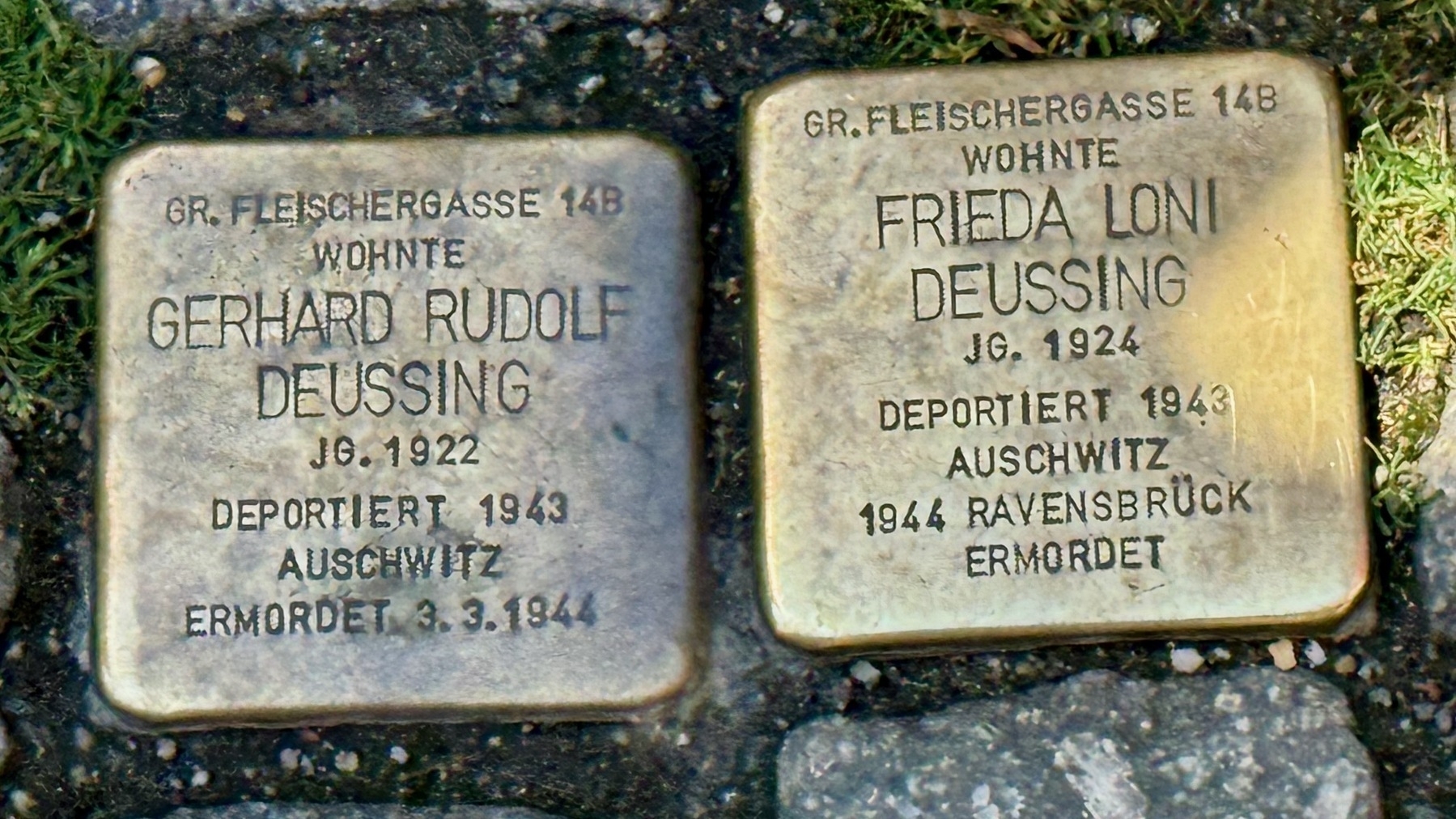
Stolpersteine
These two people lived at Große Flieschergasse 14B and were deported to Auschwitz in 1943, aged 21 and 19. Were they brother and sister? A young married couple?
The stones show their years of birth (JG. = Jahrgang) and that they were murdered (Ermordet) in 1944 .
What an inspiring and important project.
Stolperstein (Wikipedia)
Matthäikirchhof
Next Christine took us to the Matthäikirchhof (‘Matthew Churchyard’) area. It is a place where the layers of Leipzig’s past intersect with its present.
Leipzig was originally founded as a Slavic settlement known as Lipsk around the 10th century. The first recorded mention of the city occurred in 1015 under the name Urbs Libzi.
Its modern foundation is often dated to 1165, when Margrave Otto the Rich granted it city and market rights, laying the foundation for its growth as a key trading hub at the intersection of the Via Regia and Via Imperii, two important medieval trade routes.
The area of the former Matthäikirchhof is one of the most historic places in Leipzig. Hardly anywhere else are so many relevant traditions present today, the sources of power of this city as well as its historical fractures and wounds can be experienced in such a small space as between Fleischergasse, Brühl and Ring.
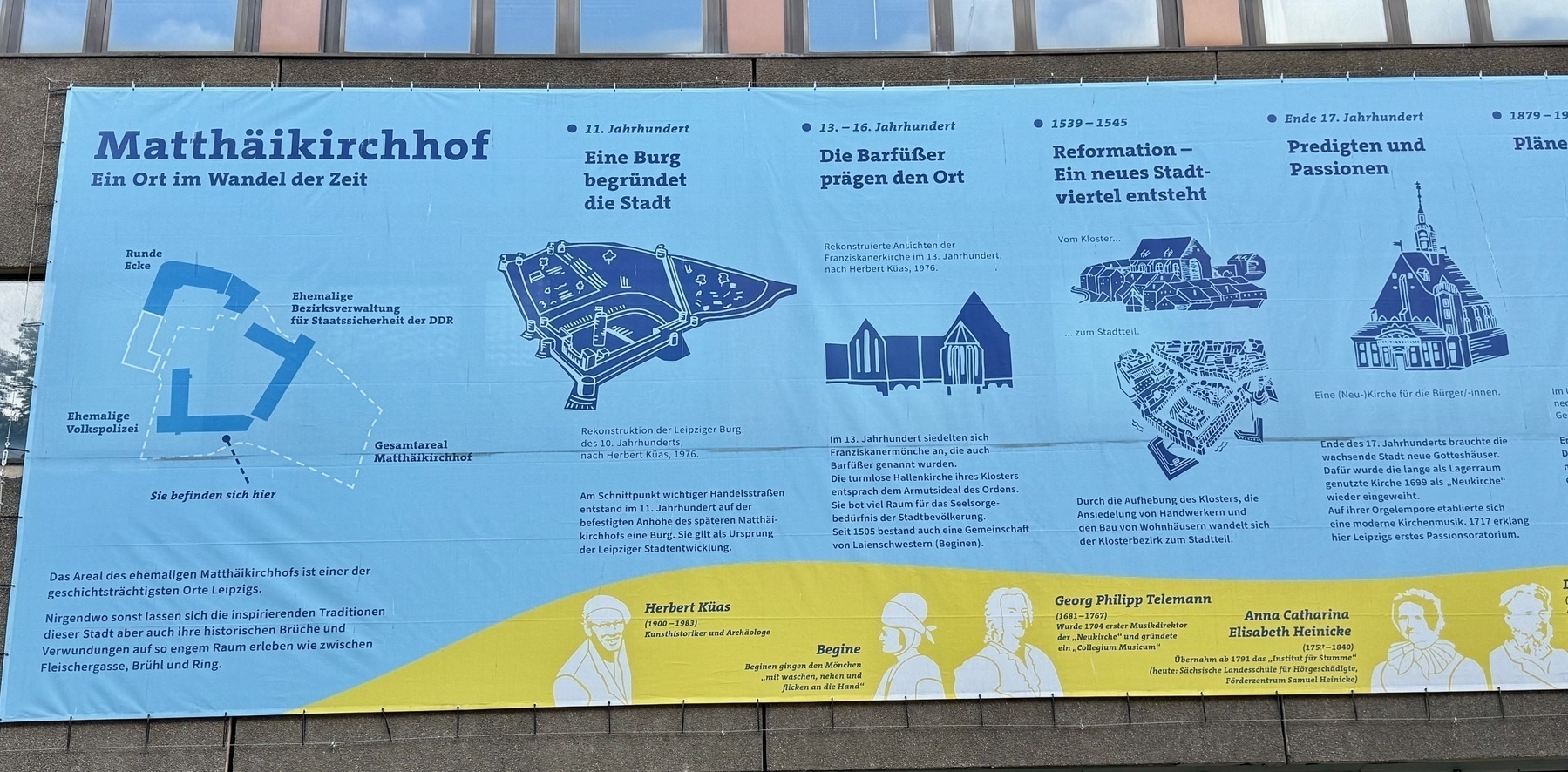
Matthäikirchhof – A Place in the Course of Time
Banner on the side of a building constructed by the Stasi in 1982
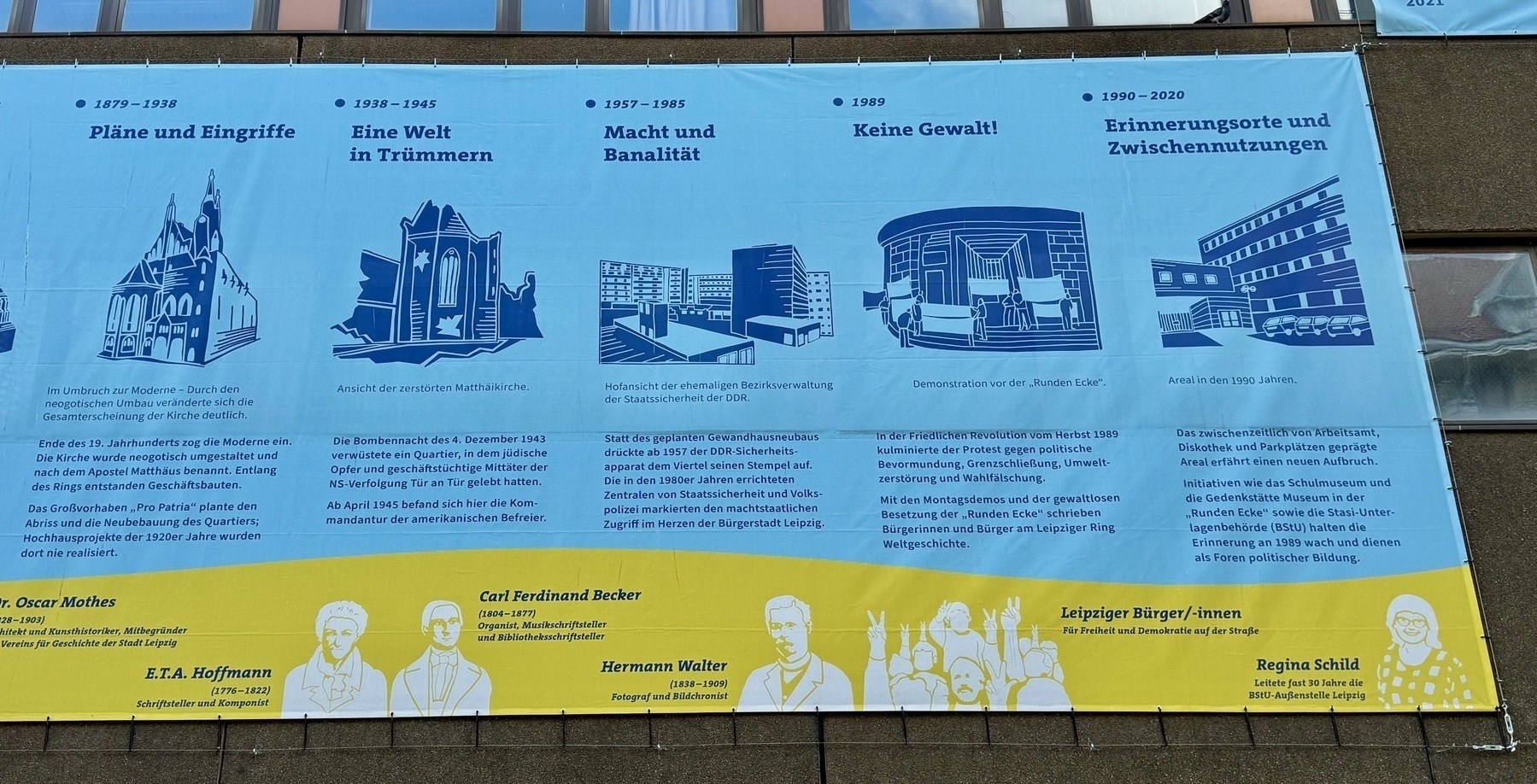
A church was established on the site in 1501. It was built on an area that had been designated for church construction after the earlier demolition of a fortress around the 13th century. After a period of disuse, it was re-consecrated as the Neukirche (New Church) in 1699.
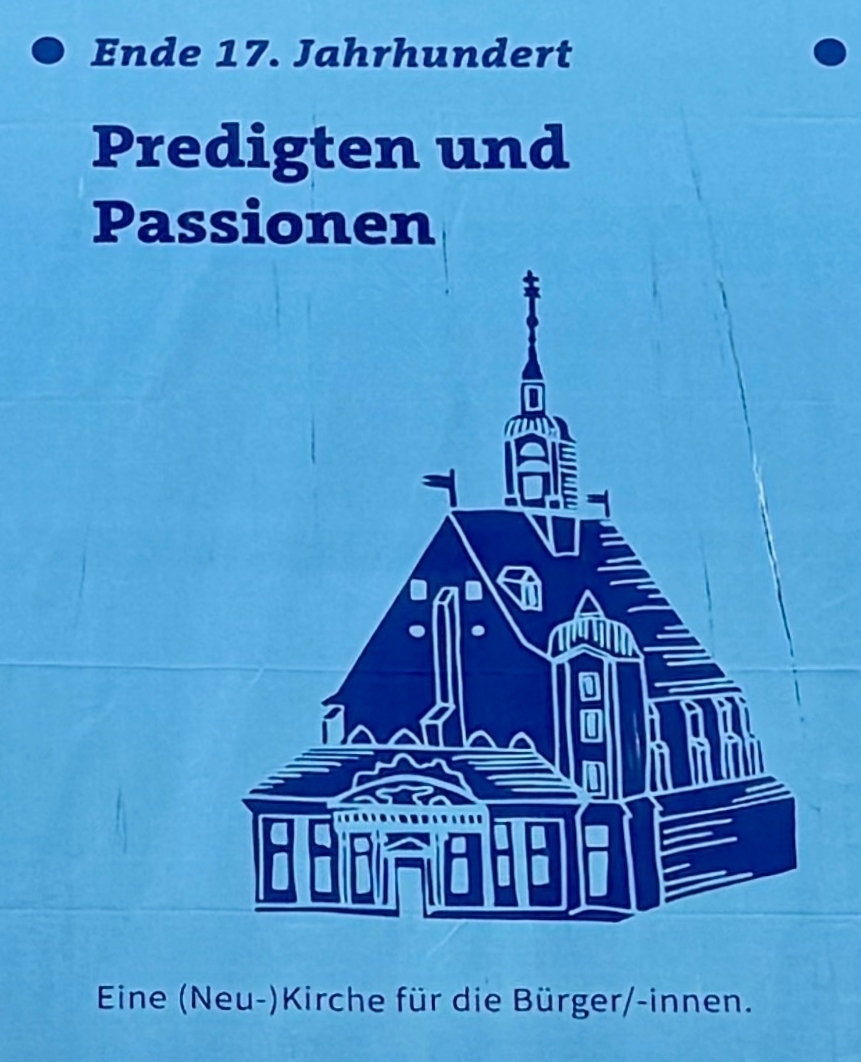
Sermons and Passions:
A (New) Church for (Male and Female) Citizens
At the end of the 17th century, the growing city needed new places of worship. For this purpose, the church, which had long been used as a storage space, was re-consecrated as the ‘Neukirche’ in 1699. On its organ gallery, modern church music was established. In 1717, Leipzig’s first Passion oratorio was performed here.
I was delighted to discover that Georg Philipp Telemann, a contemporary of Bach and one of my favourite composers, was appointed the first music director of the Neukirche in 1704. Telemann went to Leipzig University to study law but quickly became heavily involved in music and established a Collegium Musicum in 1702. Bach later directed the Collegium from 1729.
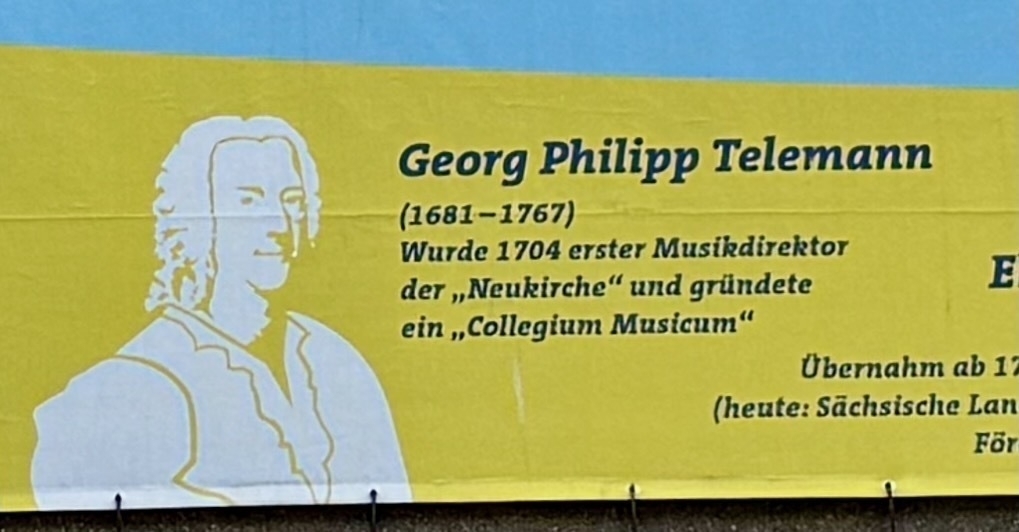
The church became known as the Matthäikirche in 1879 after significant reconstruction. It was damaged during World War II and later demolished by the East German government in the early 1950s.
Today the Matthäikirchhof is best known as the site of the headquarters of the Stasi (State Security), the secret police of East Germany (German Democratic Republic, GDR). The Stasi operated from 1950 until the fall of the Berlin Wall in 1989. Since 1990 part of the site houses the Stasi Museum Leipzig.
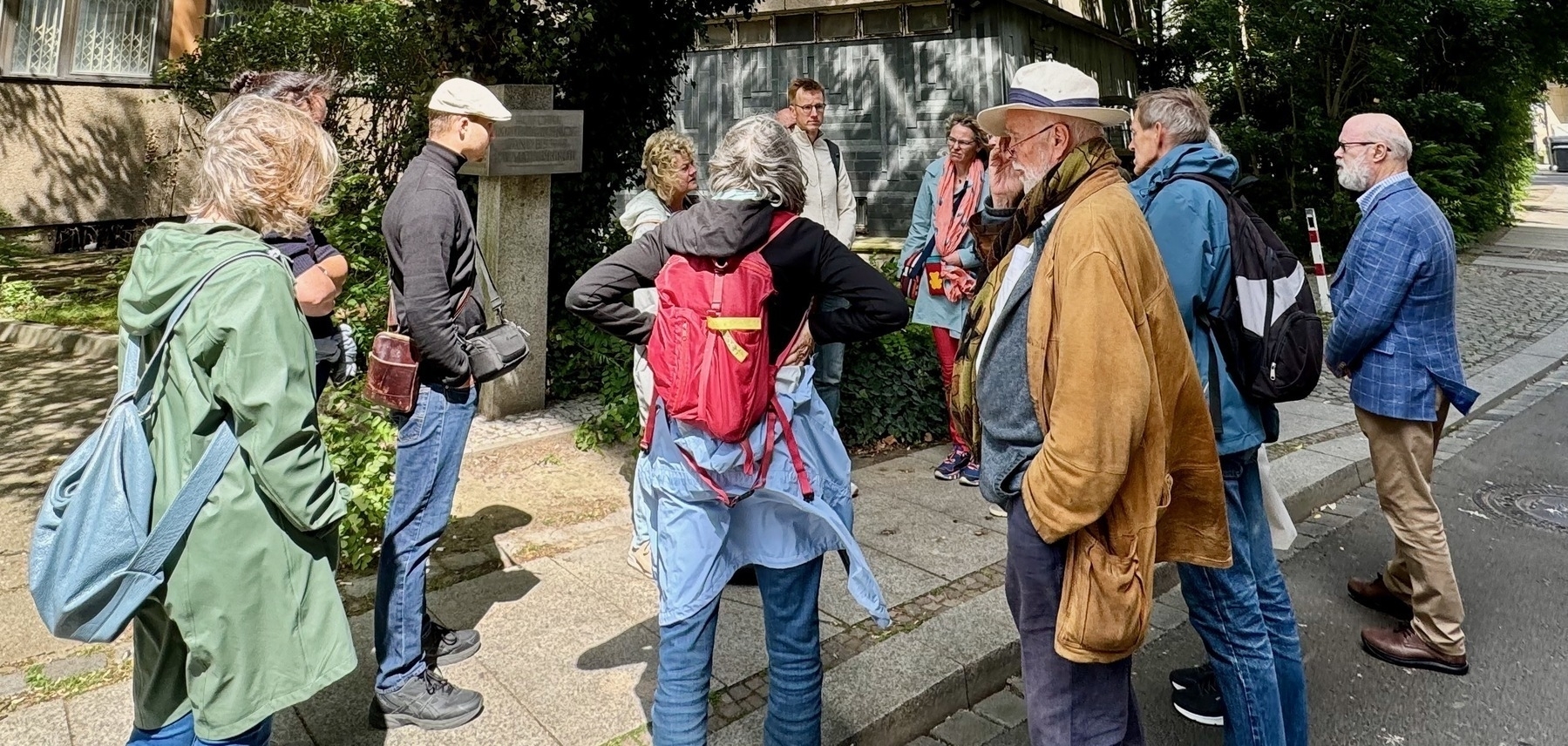
Christine telling us some of the history of the site
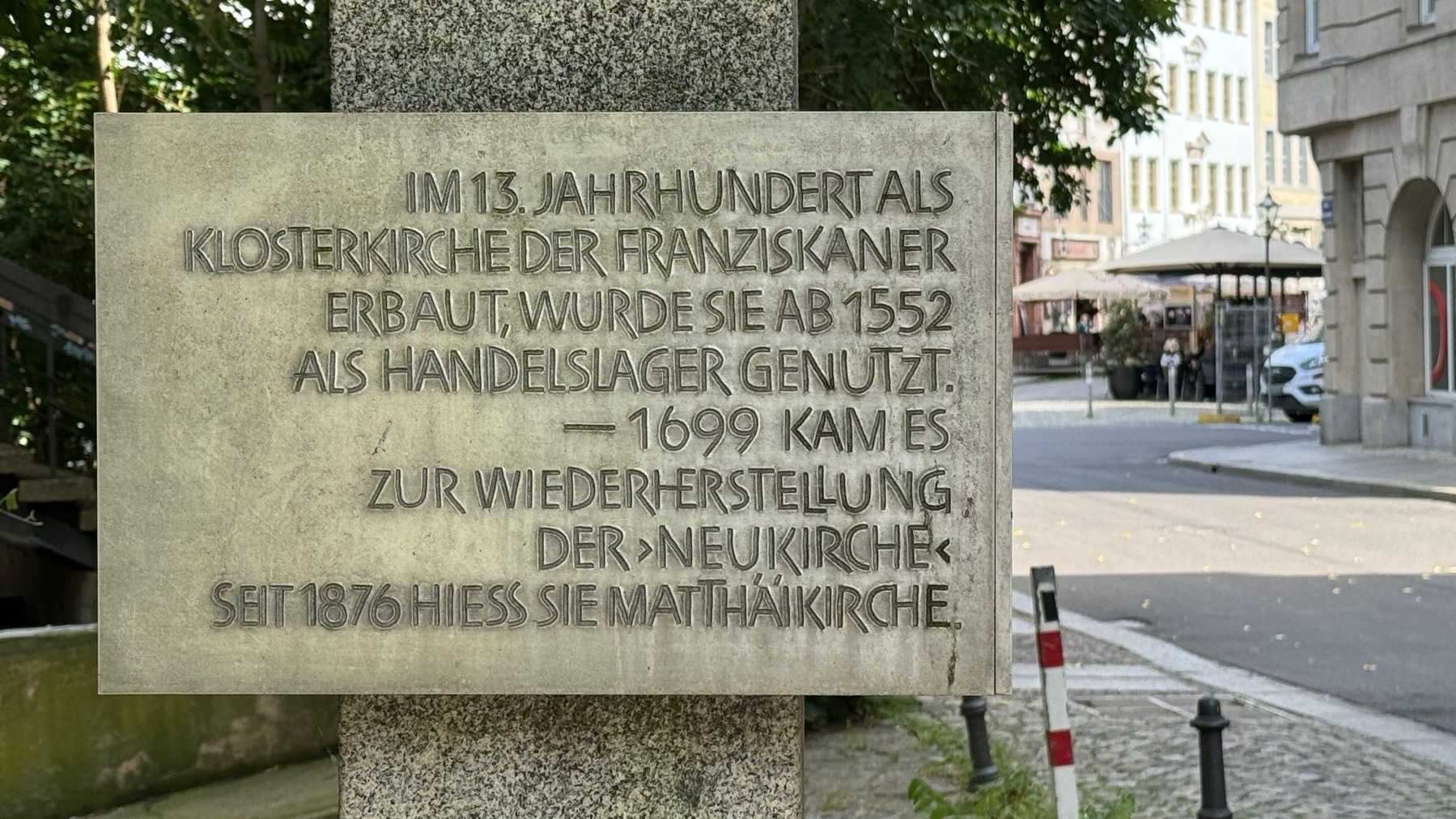
Built in the 13th century as a monastery church of the Franciscans, it was used as a trading warehouse from 1552. In 1699, it was restored and became known as the Neukirche; since 1876, it was called the Matthäikirche.
I love the font. Geometric, modern and the all caps hints at ancient Rome.
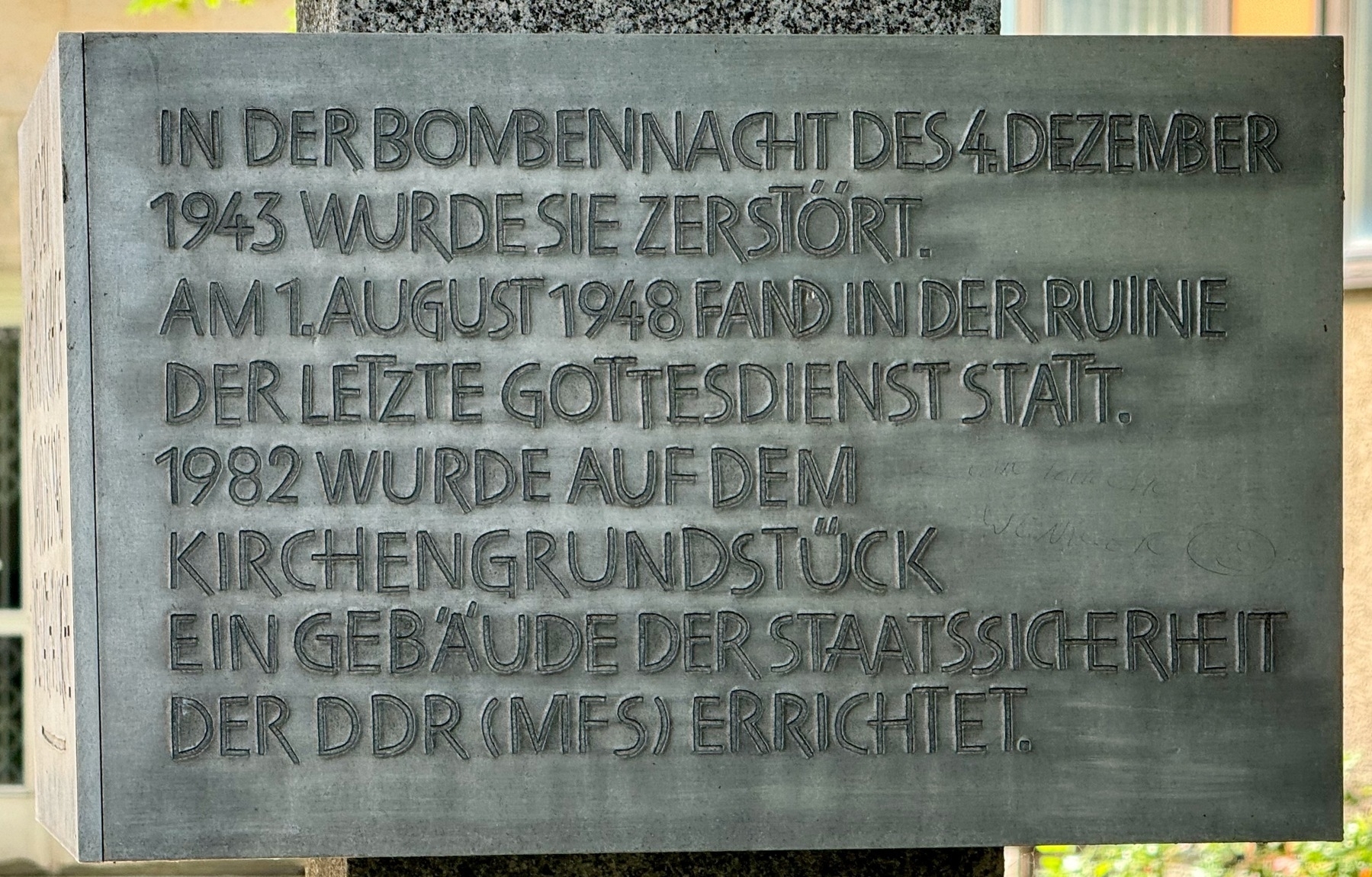
In the bombing night of 4th December 1943, it [the church] was destroyed. On 1st August 1948, the last service was held in the ruins. In 1982, a building of the State Security of the GDR (Stasi) was erected on the church property.
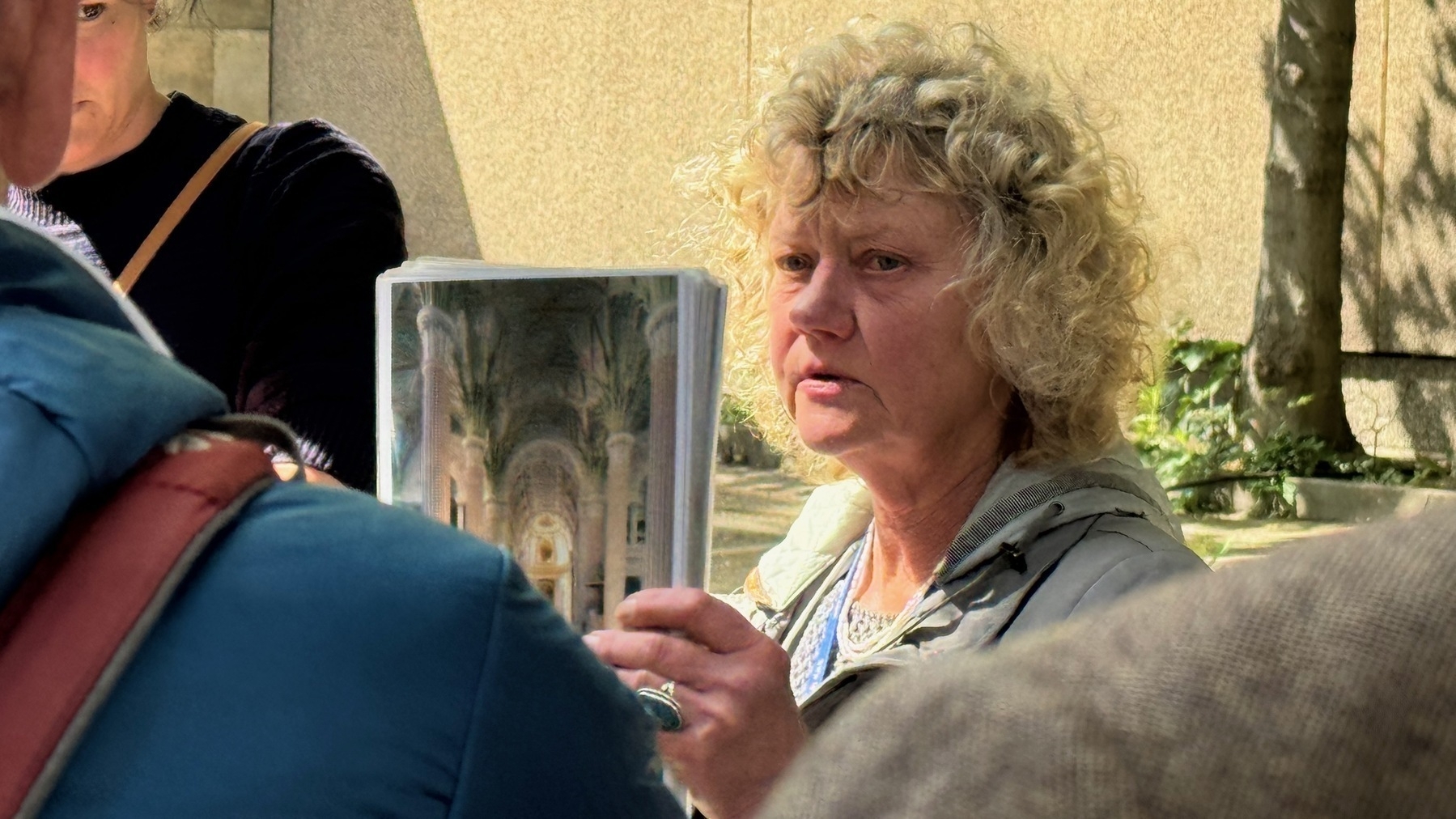
Christine showing us a picture of the interior of the St Matthew Church as it once was.
Restoration and Reconstruction in the Centre of Leipzig
The East German government did a lot of damage. In my post about Bach and St Thomas Church Leipzig I wrote about how the East German Socialist Unity Party destroyed the Church of St Paul (and the organ in it that Bach played on many times) as part of an urban redevelopment program. They saw it as remnant of a bourgeois and religious past that conflicted with the socialist vision of the East German state.
Since reunification in 1990 the state is restoring and reconstructing Germany’s heritage. The St Nicholas and St Thomas churches are now in immaculate condition and you can see evidence of the process throughout the centre of the city.
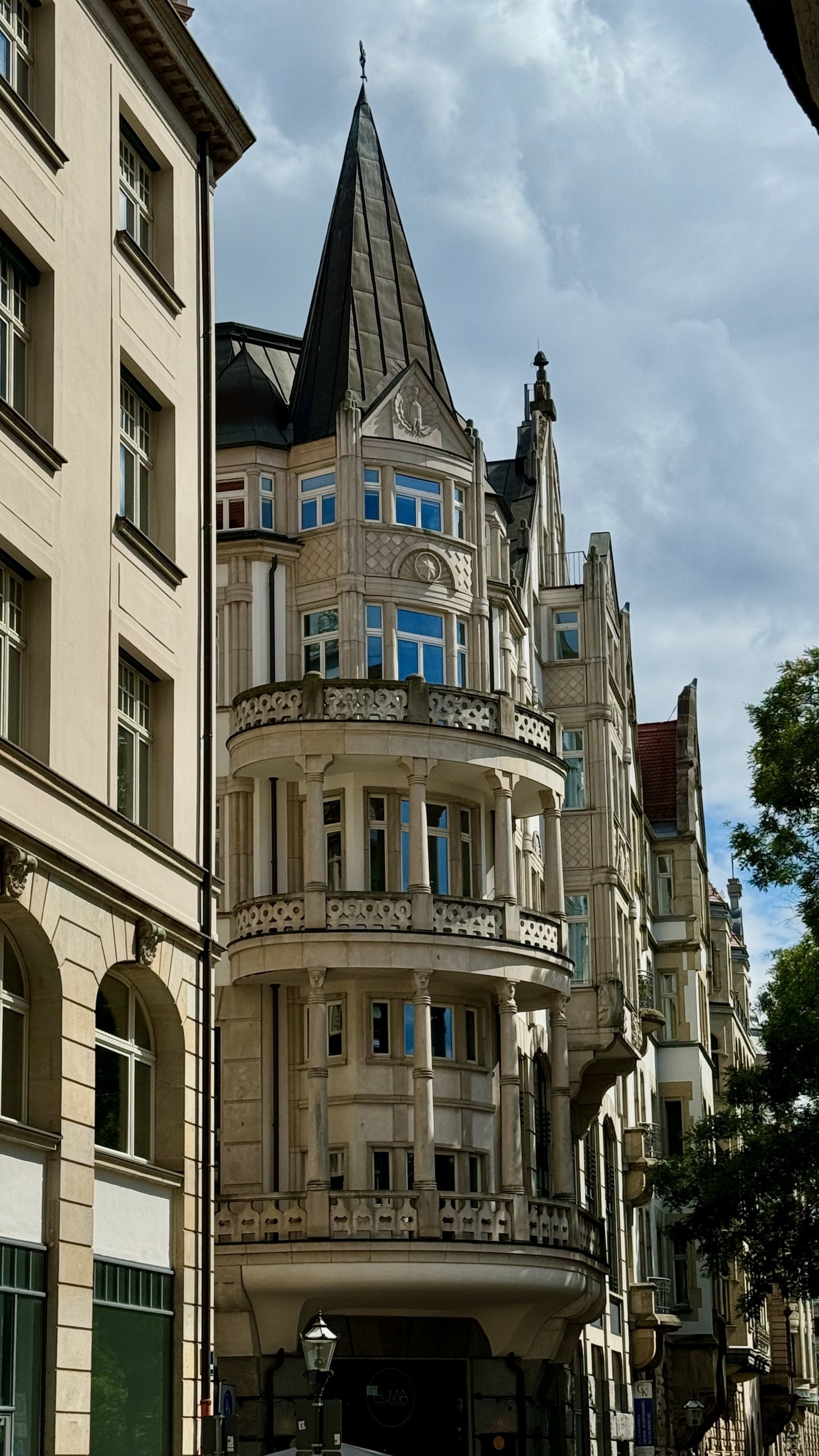
This building was a bombed wreck after the war. It has been reconstructed from surviving photographs.
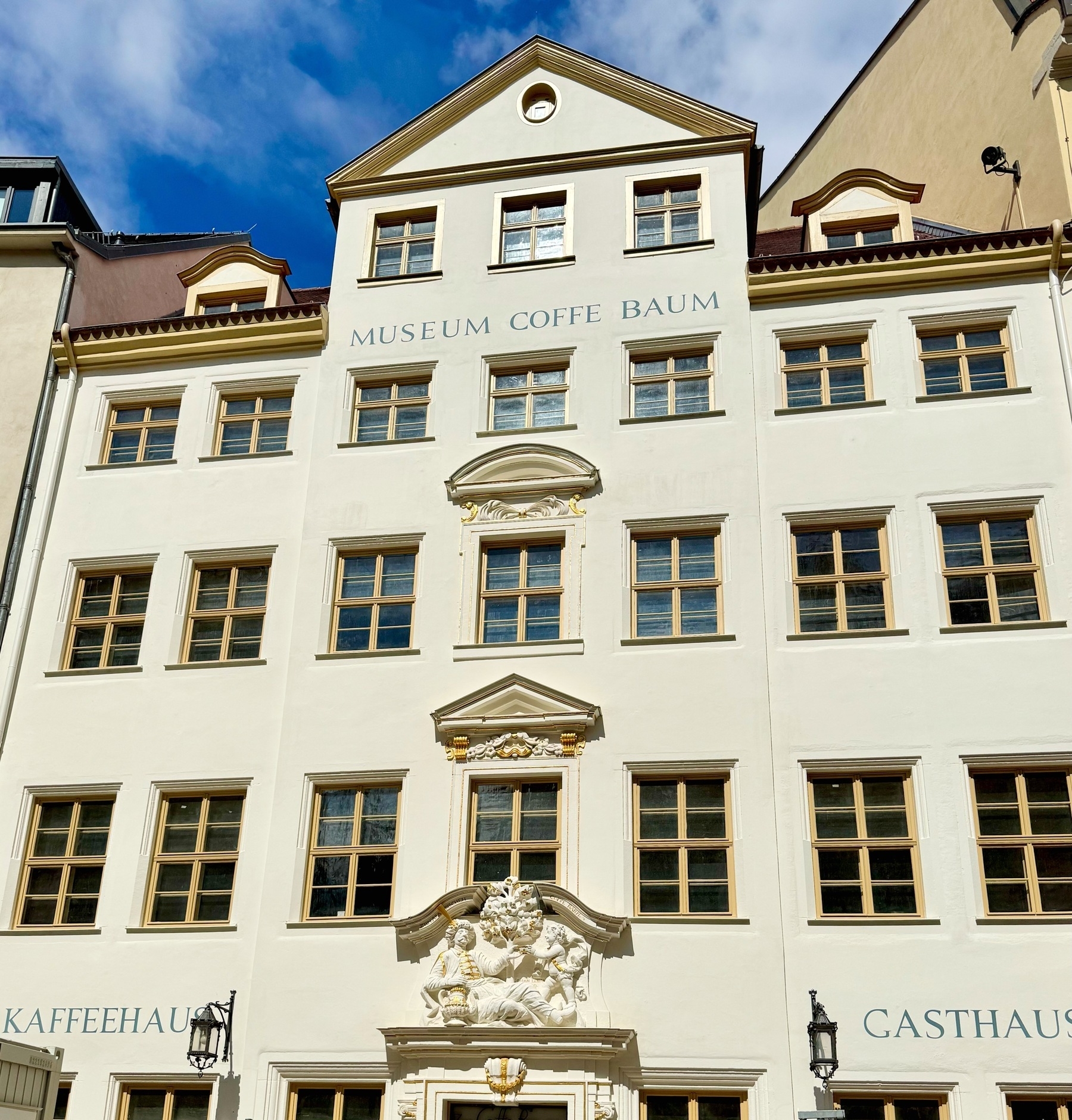
Zum Arabischen Coffe Baum (At the Arabian Coffee Tree)
One of the oldest coffee houses in Europe
Coffee was first served here in 1711. The building is being reconstructed and turned into a museum. It is still shut but should be ready for the public in 2025.
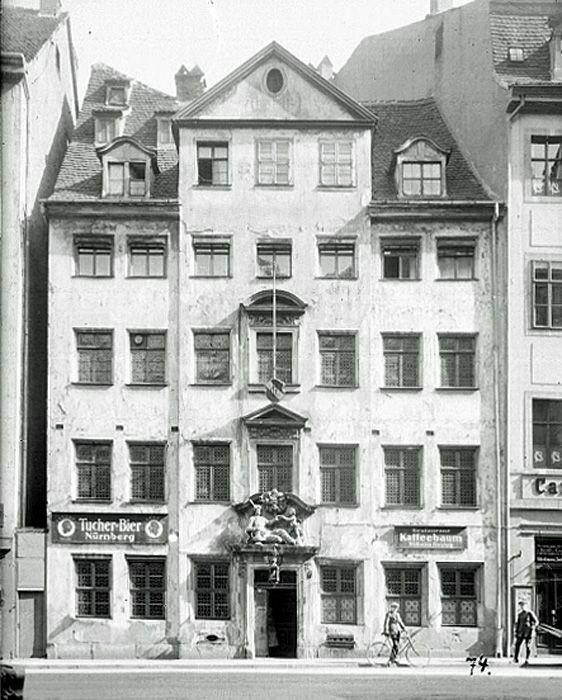
The building in 1924
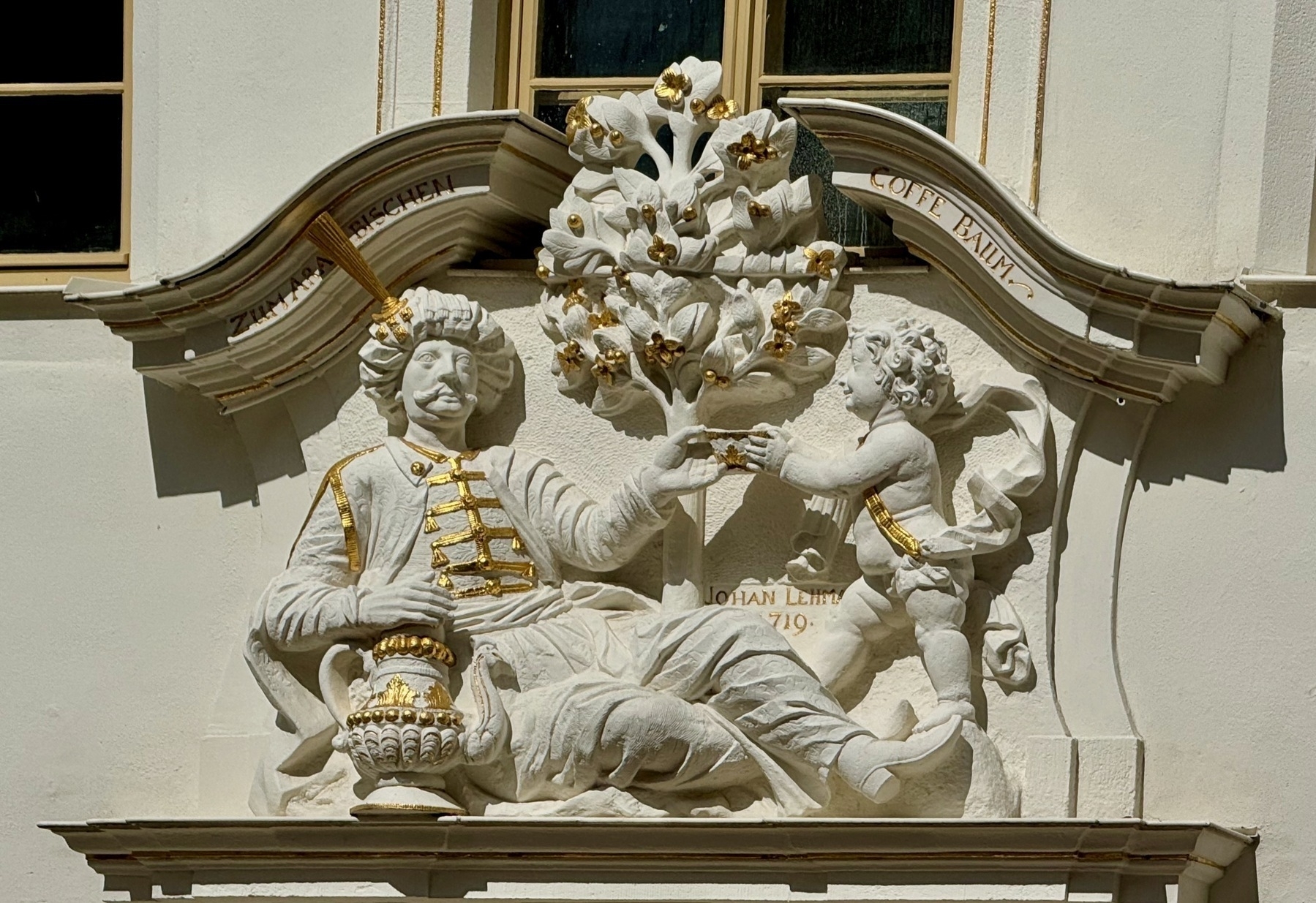
The Arab with his tree (?)
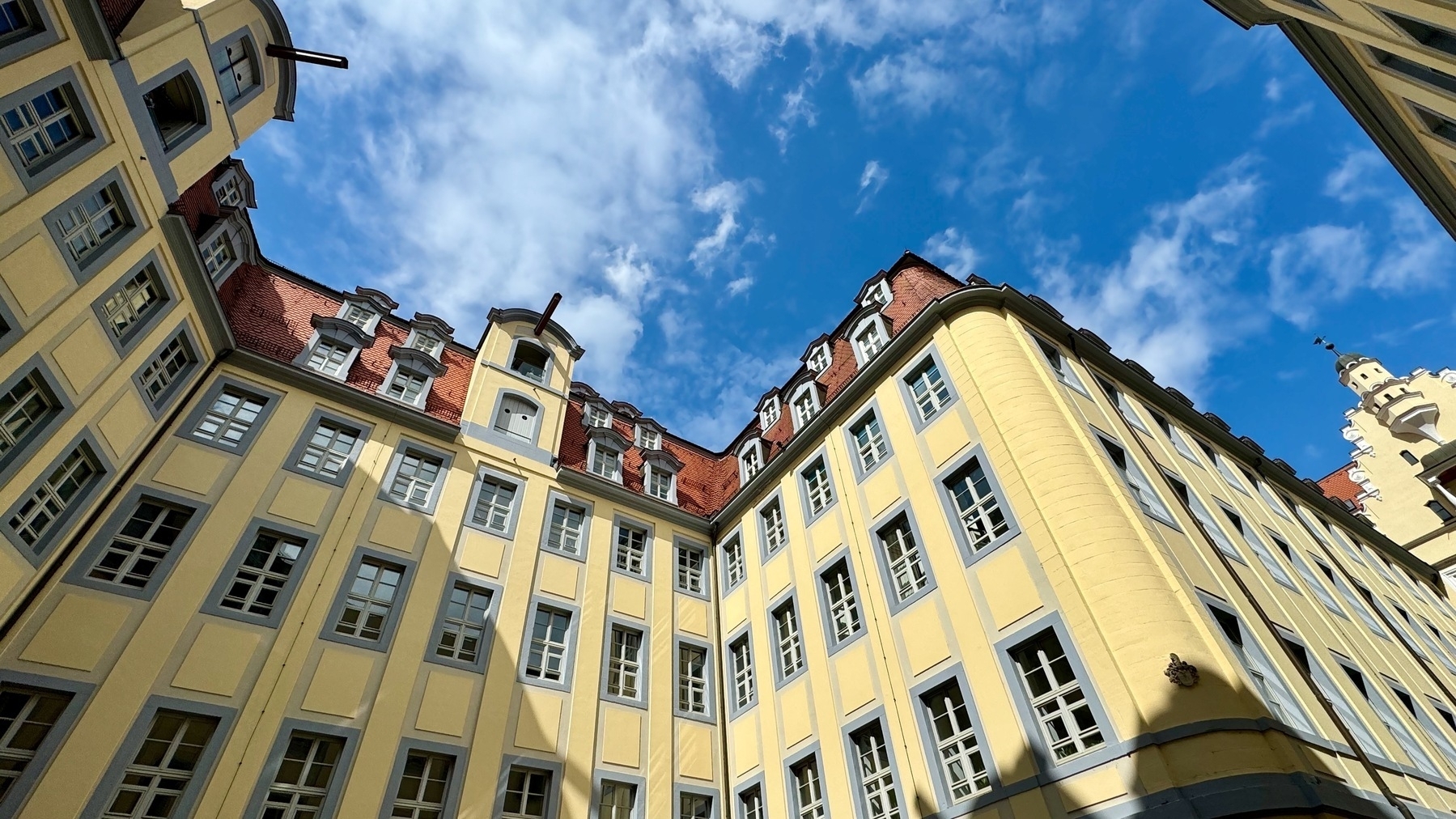
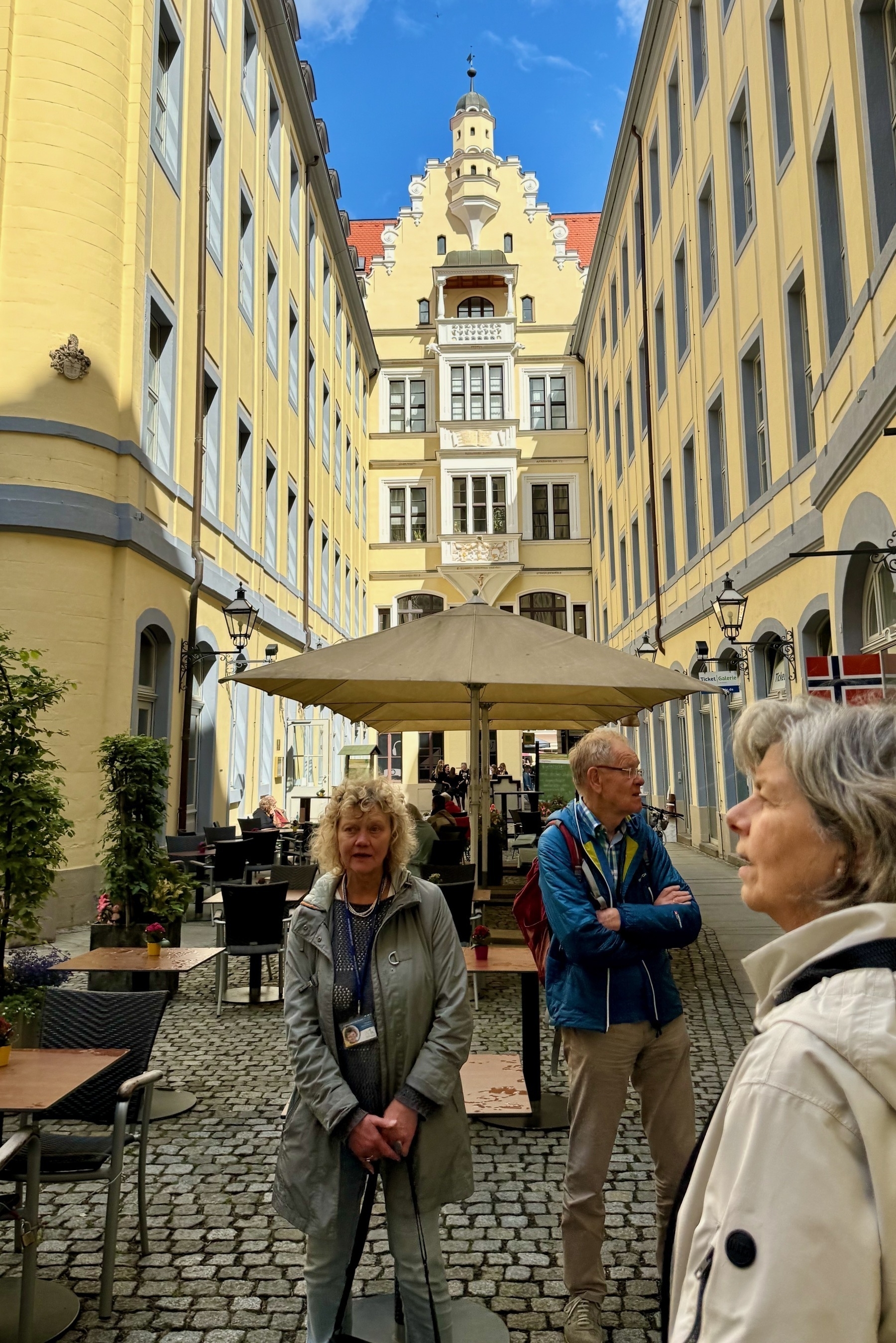
Many of the streets in the centre of Leipzig are cobbled like this
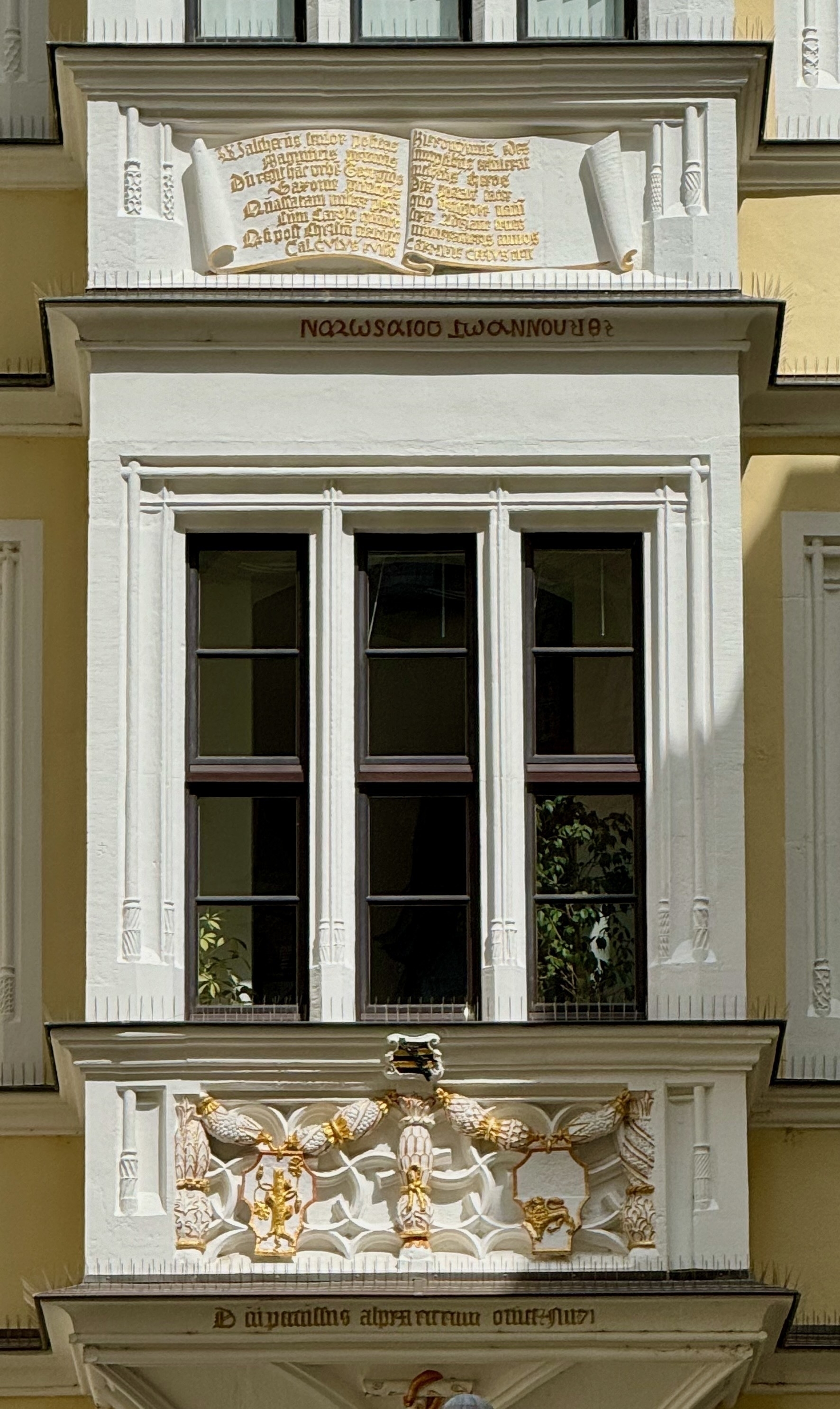
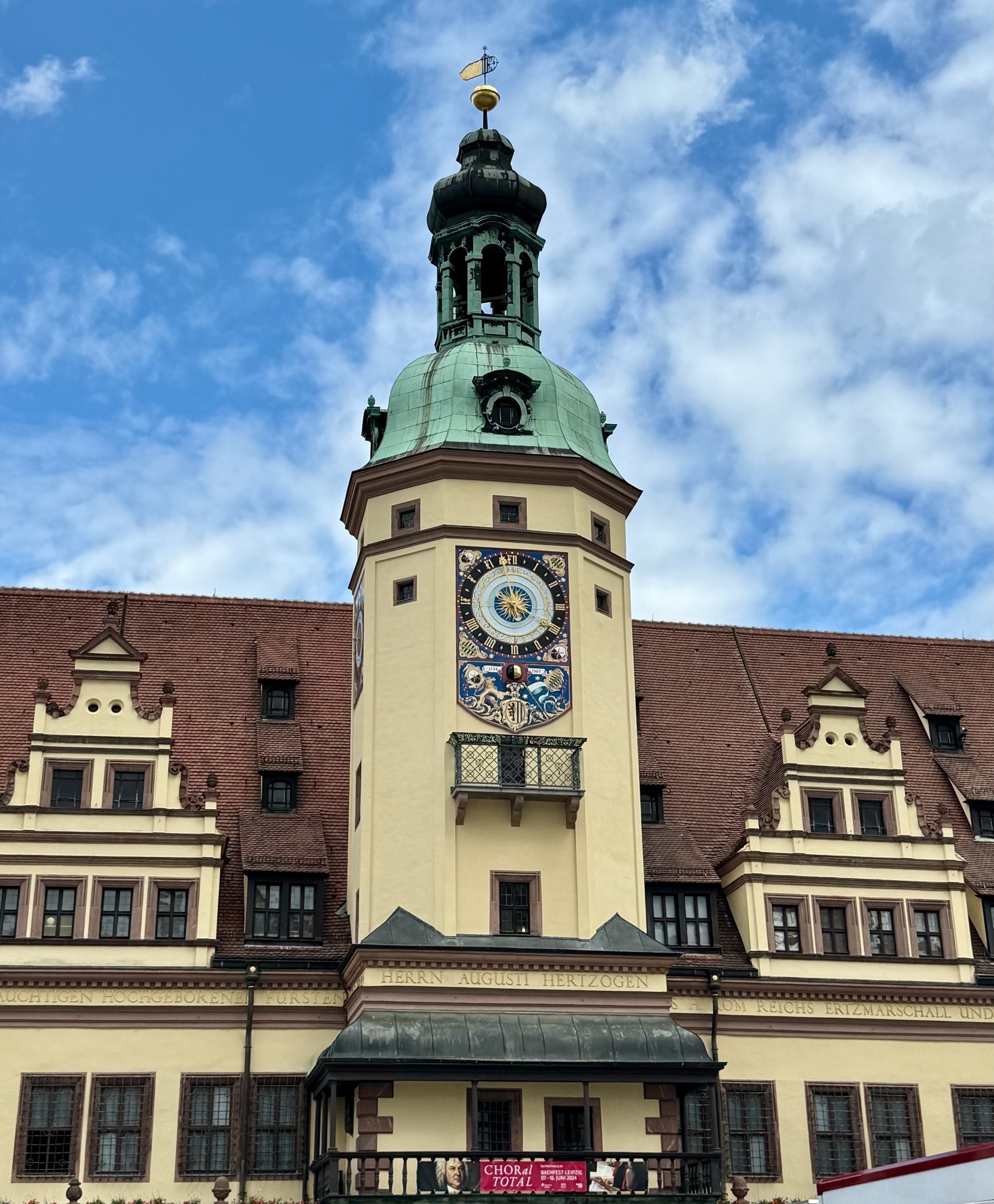
The Old Town Hall in the grand Market Place
It is now a Museum of City History
Christine told us that the East German government wanted to pull down the Old Town Hall but the mayor stood firm in opposition.

Street Entertainment
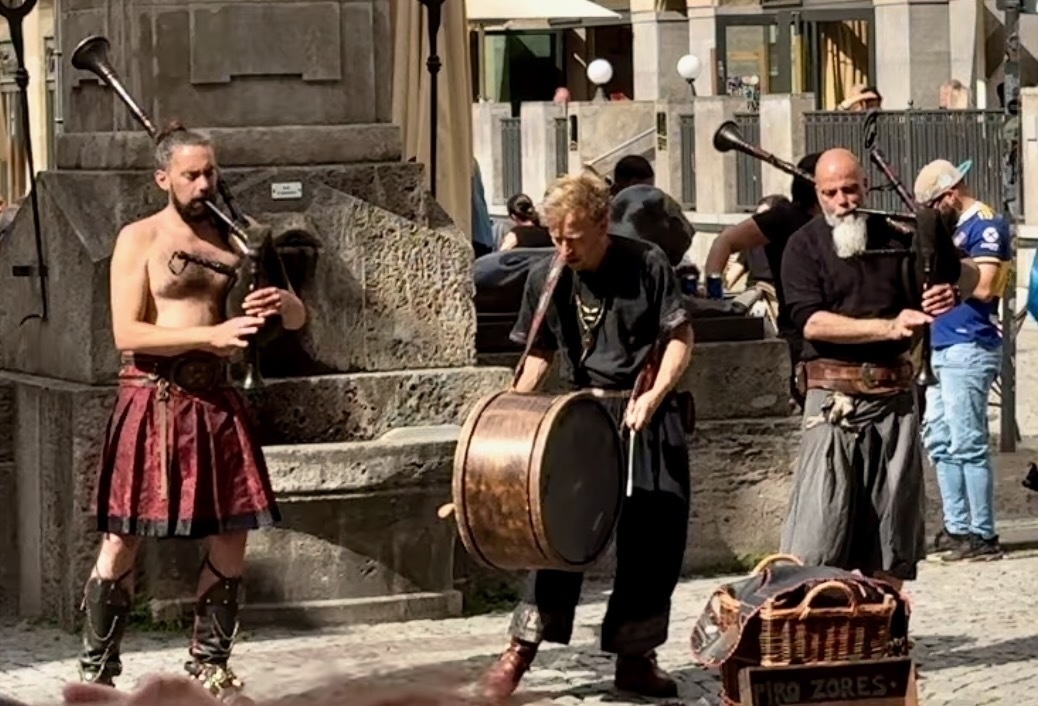
Apparently these guys are big in Berlin. They’d come down to Leipzig for the big football match.
Another Leipzig Coffee House
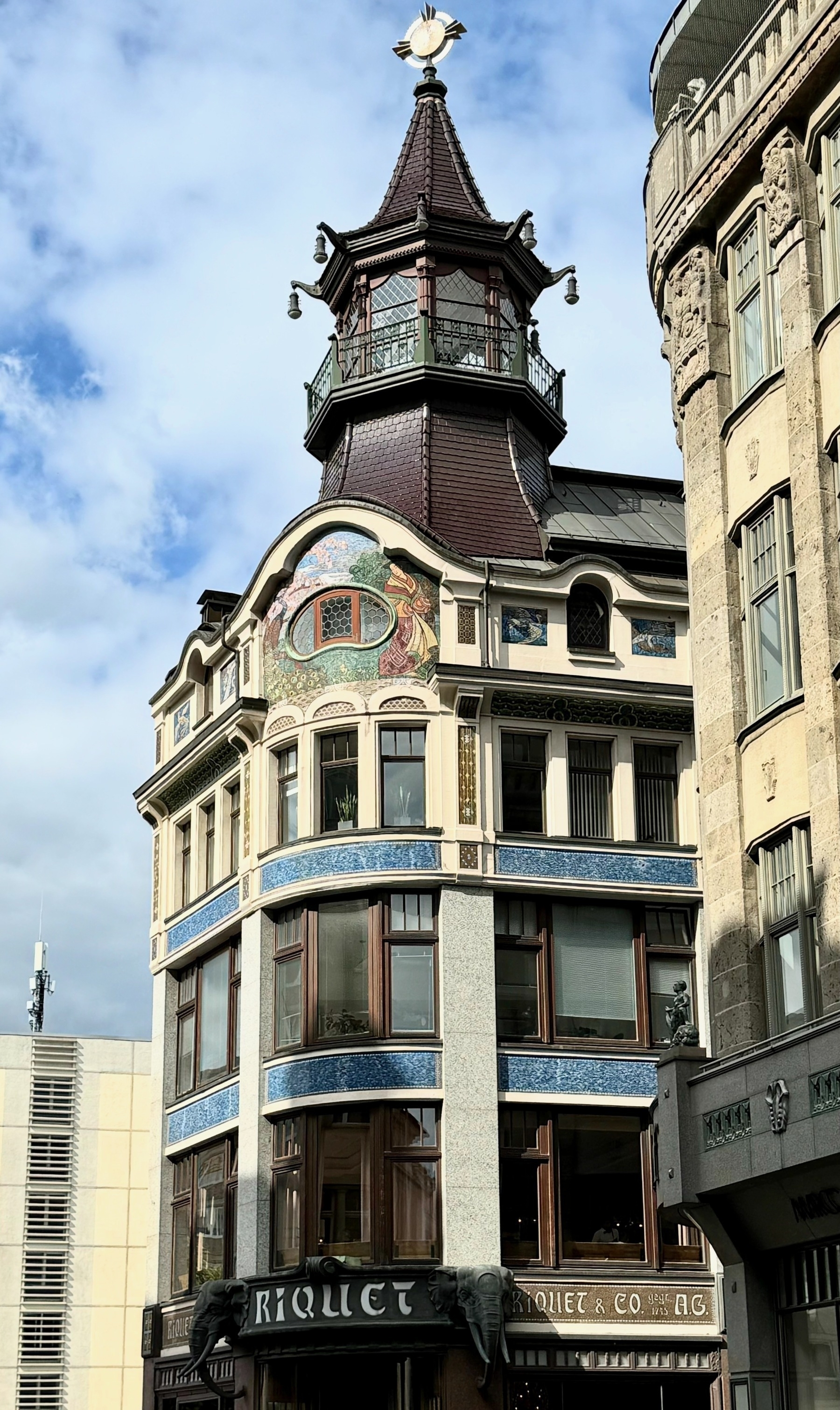
Coffee House Riquet
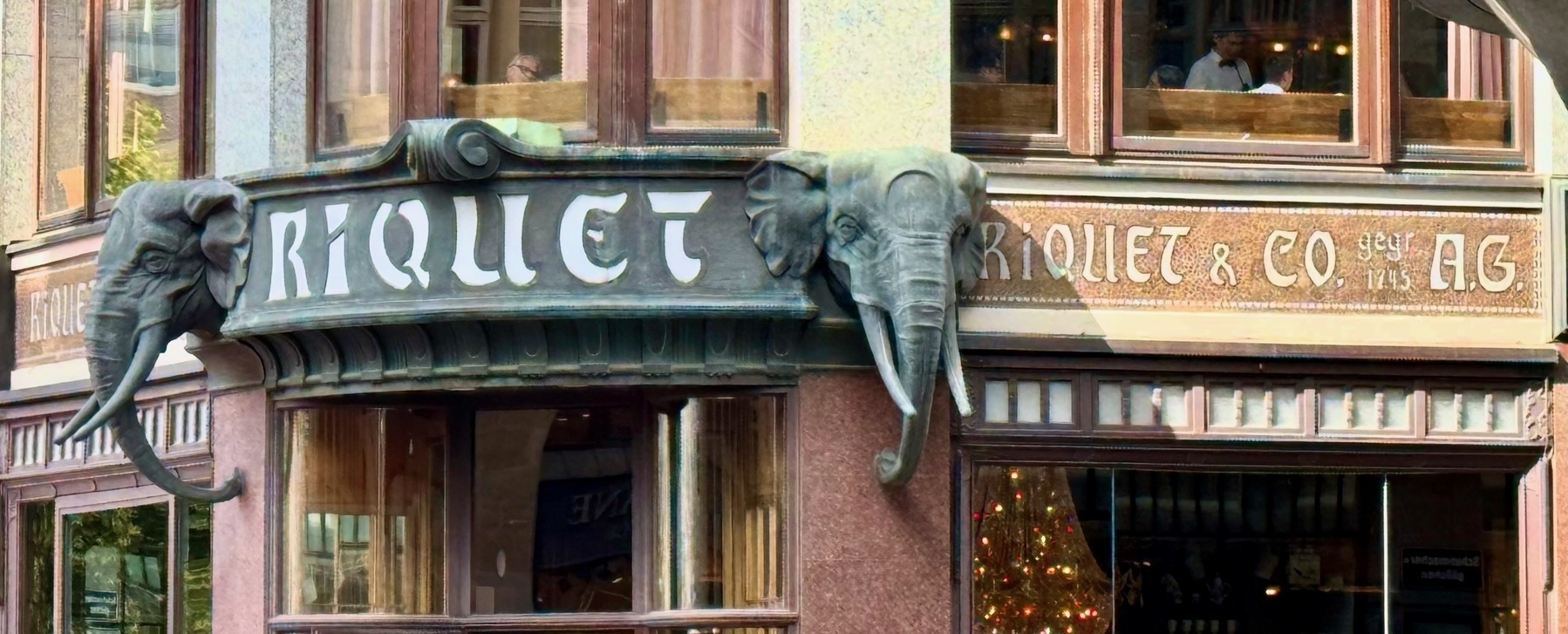
In November 1745, the Huguenot Jean George Riquet (1713–1791) founded the company Riquet & Co in the nearby Katharinenstraße as a shop for the importation of tea, coffee and other exotic items, later supplemented by a public coffee bar.
After a short time, the name Riquet was a household name in the world of coffee and the upscale society with its gallant forms of life far beyond Saxony. No wonder that the young Goethe didn’t just think of balls and concerts when he raved about Little Paris. As a self-confessed supporter of the chocolate from the house of Riquet, he even had it sent to him when he was on the road, and was also in close correspondence with the company founder.
Auerbach’s Cellar – A Famous Wine Bar
Johann Wolfgang von Goethe moved to Leipzig in 1765 to study law at Leipzig University. He frequented Auerbach’s Keller, a famous wine bar.
There is a key scene in Goethe’s Faust where Mephistopheles casts a spell on a group of students in Auerbach’s Cellar.
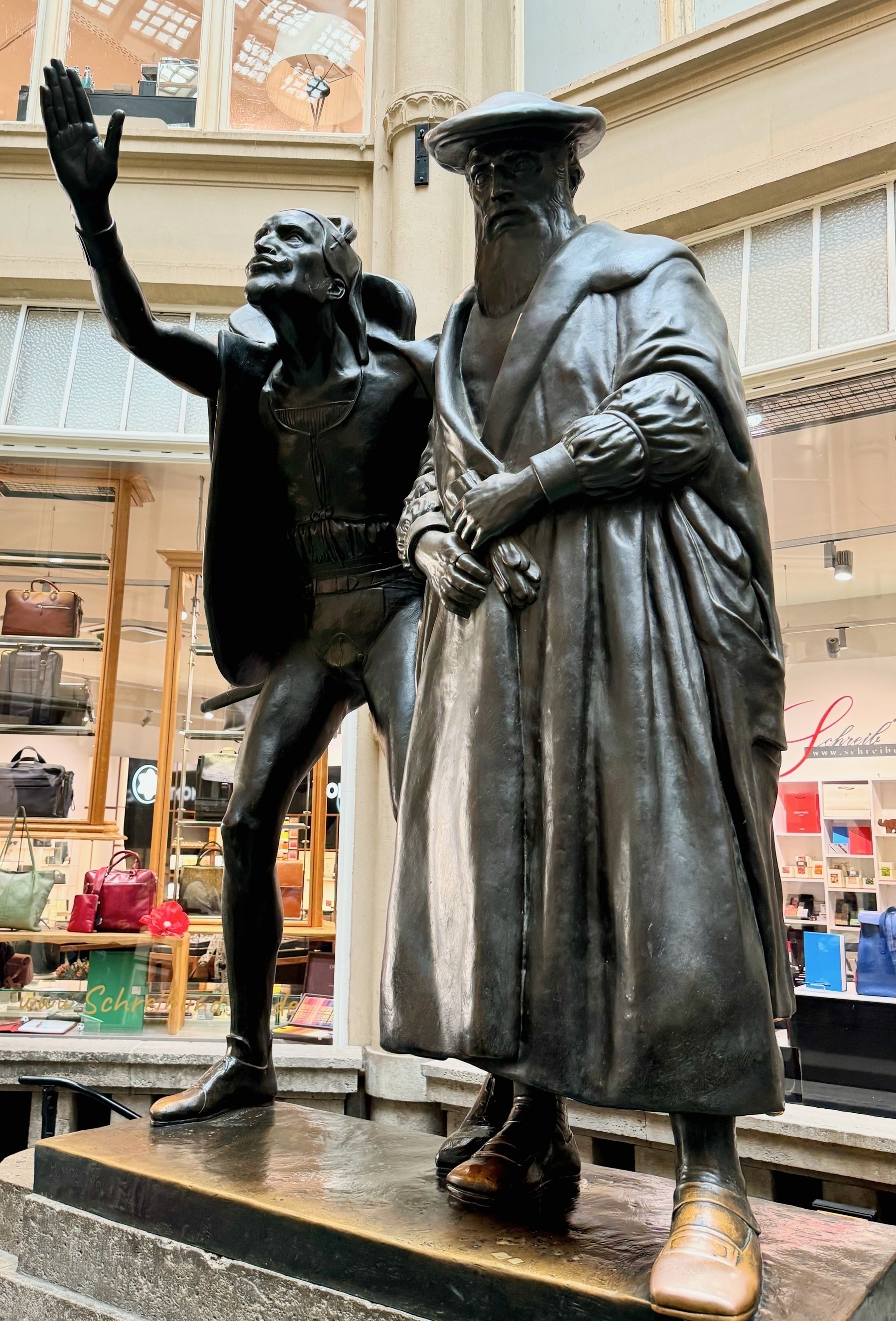
Mephistopheles and Faust
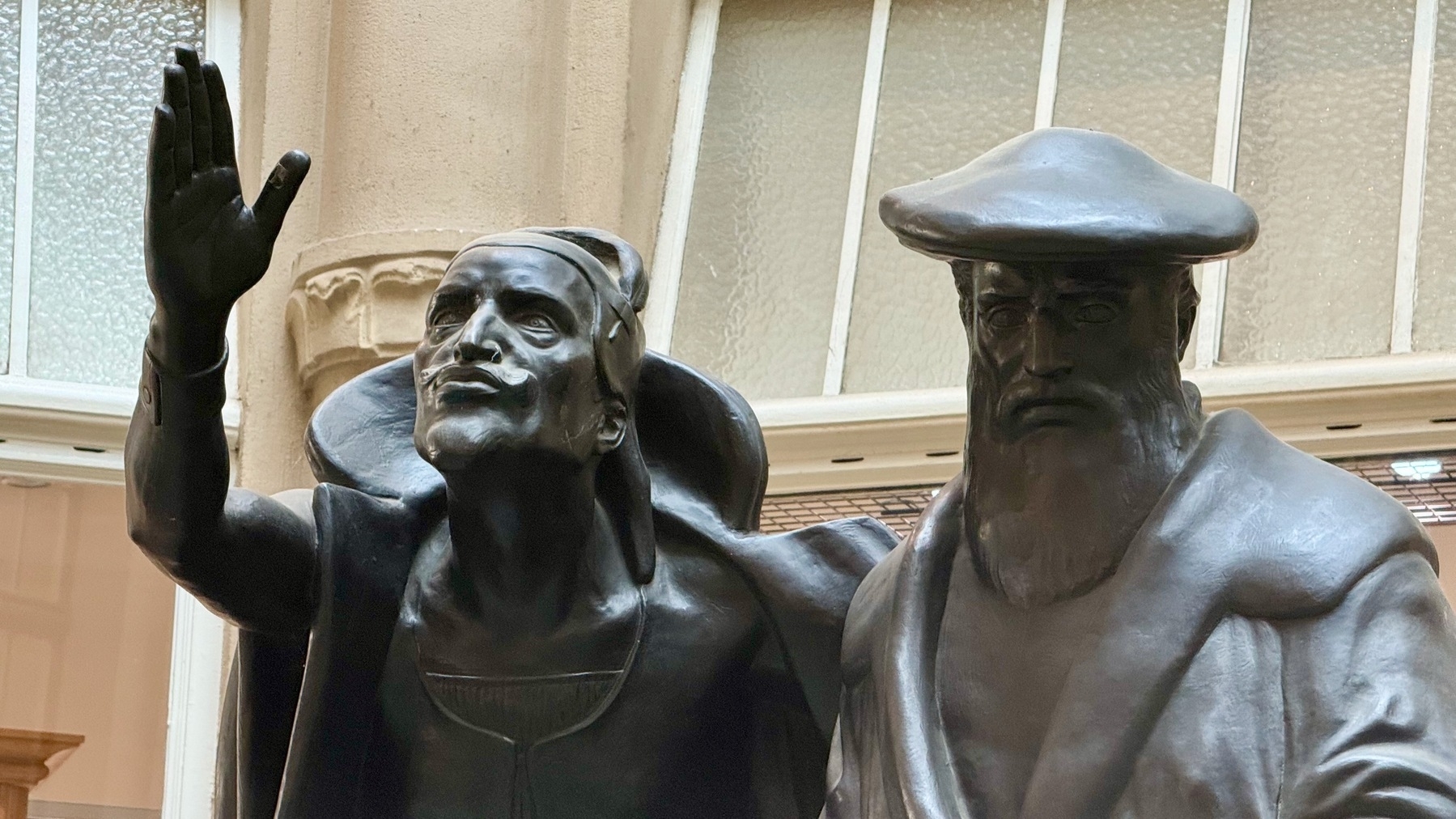
St Nicholas Church
The last stop on our walking tour.
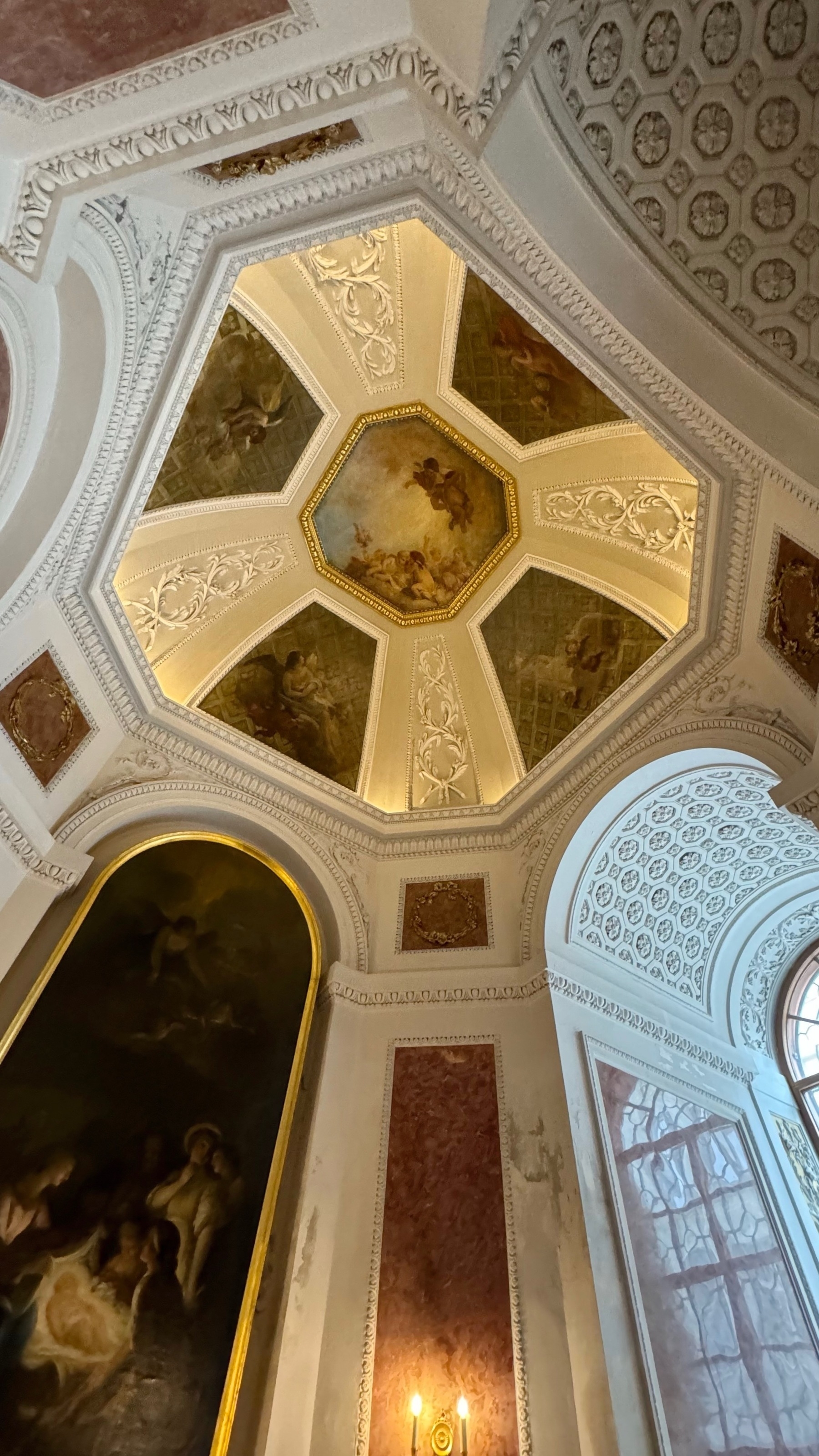
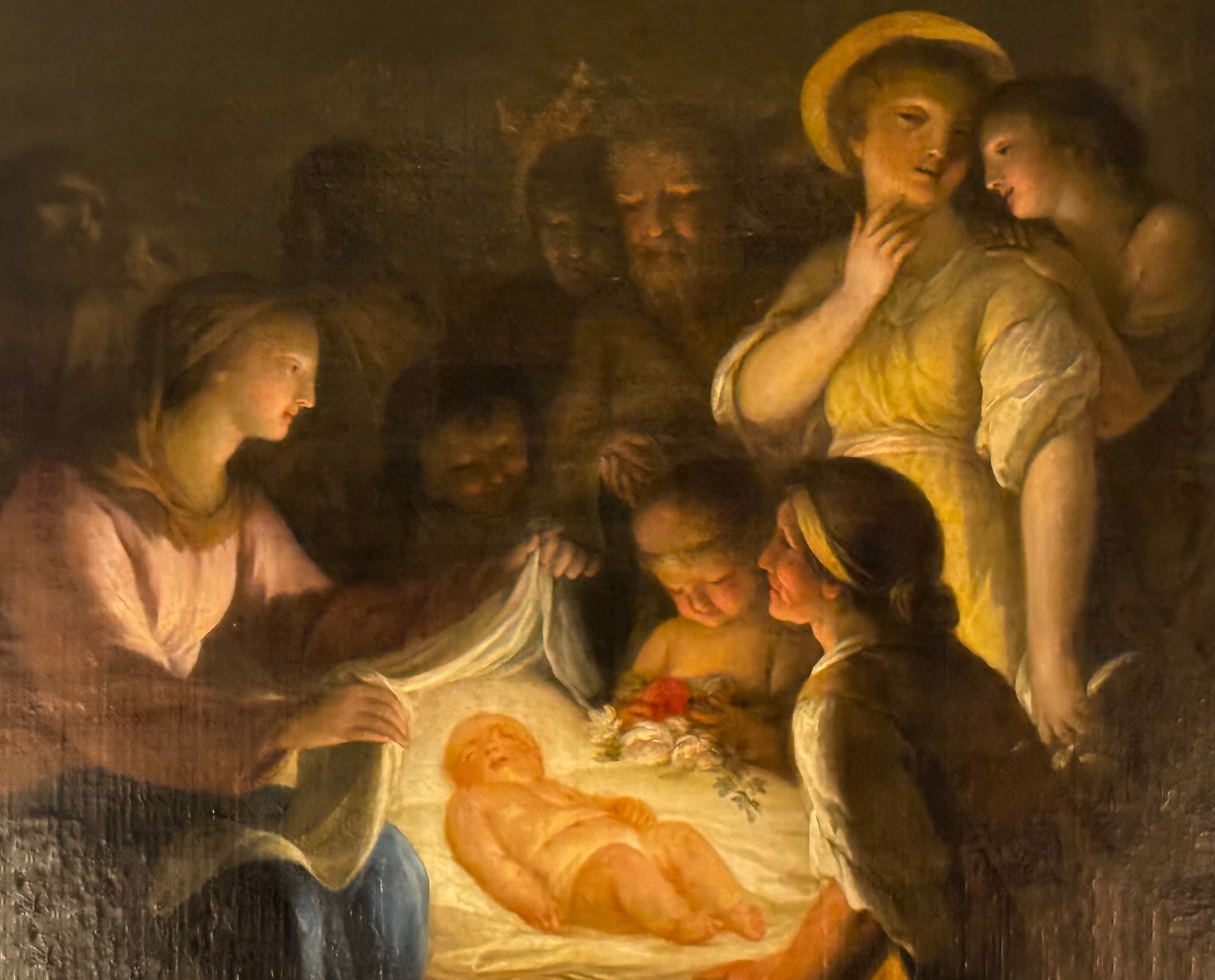
Refreshments
The walking tour lasted just over two hours and I was ready for some refreshment.
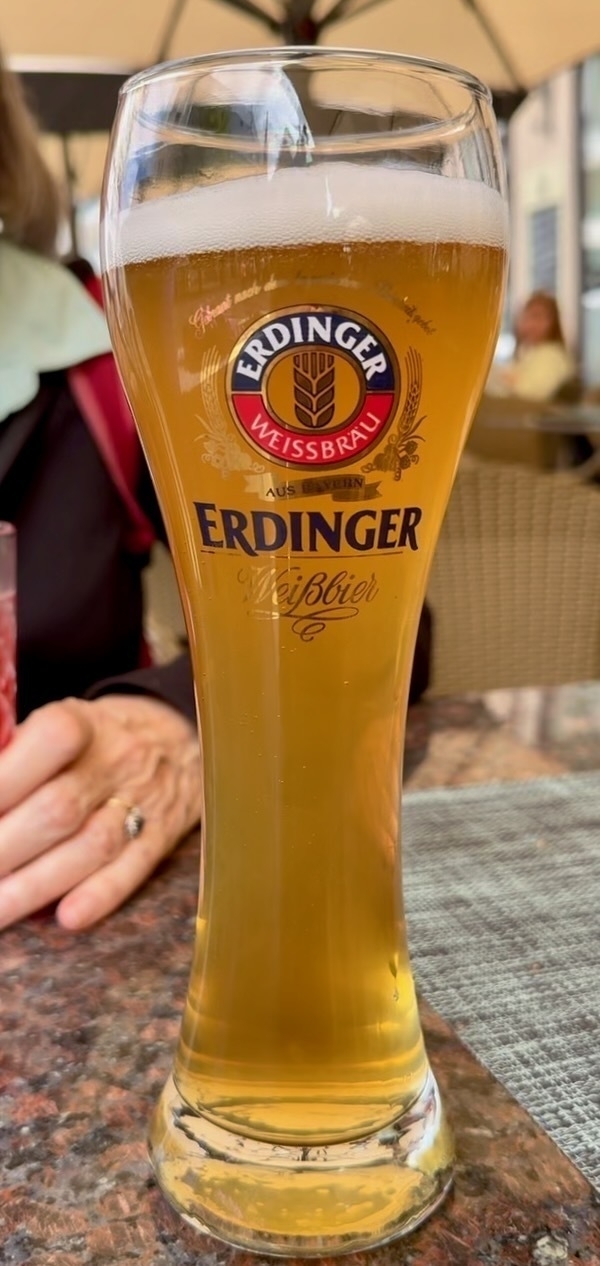
Erdinger Weißbier (Wheat Beer)
in a Hefeweizen glass
Erdinger is the world’s largest wheat beer brewery. They describe their Weißbier as ‘a golden cloudy beer’.
Very enjoyable and the taste is quite different to beer predominantly made with hops.
- Wheat beer (Wikipedia)
- Erdinger (Wikipedia)
Sublime Music in St Thomas Church
The ‘concert’ was titled Motette and was like an evensong service presided over by the St Thomas pastor (Jutta Michael). She welcomed us and gave a short address (Ansprache) in the middle. The service started at 6:00 pm and ran for about an hour. Apparently evening services with music are a regular occurrence (such a wonderfull thing).
You couldn’t buy tickets in advance: we had to line up early and wait for the doors to open. The entrance fee was just a few Euros and the church filled very quickly.
Proceedings began with an organ prelude by Bach played on the ‘Bach’ organ by the St Thomas assistant organist, Ivo Mrvelj. It was such a pleasure to hear the ‘Bach’ organ live (follow link to see the photos and listen to a demonstration). At the end, as a postlude, the organist played a piece by Camille Saint-Saëns on the Sauer organ (built in 1889 and expanded in 1908).
The rest of the service was choral music sung by the BachChor Mönchengladbach directed by Stephanie Borkenfeld-Müllers.
Choral works from the Romantic period are the main focus of the motet concert by BachChor Mönchengladbach, including three works by the Munich composer Joseph Gabriel Rheinberger and the famous “Nachtlied” (“Night Song”) by Max Reger. Opening the concert with a Baroque contrast is a double-chorus motet by Heinrich Schütz from his collection, “Psalmen Davids”.
The highpoint was a work by Norwegian composer Knut Nystedt titled Immortal Bach.
The choral work Immortal Bach by the Norwegian composer Knut Nystedt should be seen as a deep compositional bow to Johann Sebastian Bach. The piece starts with the two opening lines of Bach’s chorale ‘Komm, süßer Tod’ (‘Come, sweet death’), BWV 478, sung in the original, after which the choir sings these quotations bar by bar simultaneously at different tempos.
This draws out and alienates Bach’s harmonies to great effect. Nystedt, who died in 2014 in his 100th year, wrote of Immortal Bach: ‘The piece must be performed very confidently in order to be effective’.
The performance by BachChor Mönchengladbach was very effective indeed!
The sounds seemed to be suspended in the space. It’s such a sublime and ethereal piece of music.
You can listen to an excellent performance by Ensemble Accentus on Youtube:
As you listen, contemplate the text:
Come, sweet death, come, blessed rest!
Come lead me to peace
for I am weary of the world,
O come! I wait for you,
come soon and lead me,
close my eyes.
Come, blessed rest!
Full text: Komm, süßer Tod, komm selge Ruh (Wikipedia)
What a way to end our last day in Leipzig. We’ll be back.
Tomorrow we head to Berlin.
Stay tuned for more adventures on our European Odyssey!